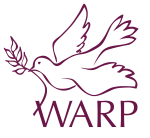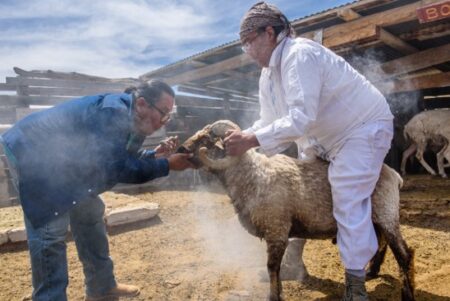By Leigh Alexander
Churro Week grew out of a collaboration of shepherds, a mill owner, a Navajo-Churro Sheep breeder/restorer of the endangered species, an extension agent, end users, a marketing consultant, and various interested parties. They were concerned with finding a job for the Navajo-Churro sheep. A wholesale blanket weaving operation was started and a mechanical wet felting machine (based on Afghan hand cranked model) was developed and constructed, all housed and facilitated by the Española Valley Fiber Arts Center (EVFAC). The Mora Valley Spinning Mill, set up specifically to service the long-haired Navajo-Churro sheep, angora goats, and alpaca of Northern New Mexico, was key to processing the fleece, washing and picking for felt, and spinning yarn for blankets.
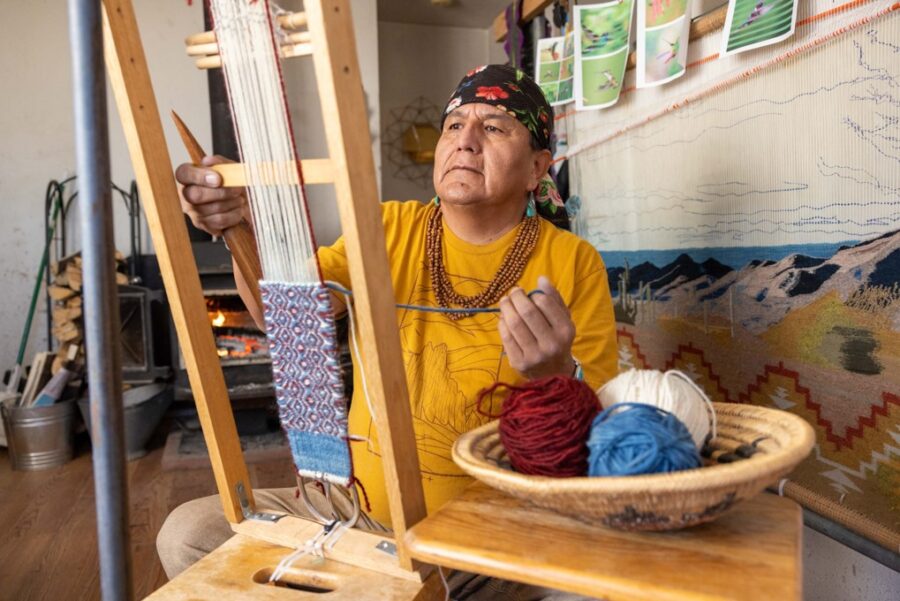
In 2014 EVFAC sponsored the first Churro Week with sheep shearing, with Diné be’ iiná (Navajo Lifeways) spending the week in Española teaching Navajo weaving, with churro processing demos, and preparing a benefit lamb dinner. Over the years it has sponsored workshops, panel discussions, and field trips, all pertaining to raising sheep, value-added production, and marketing of this rare species particularly well suited to the arid Southwest.
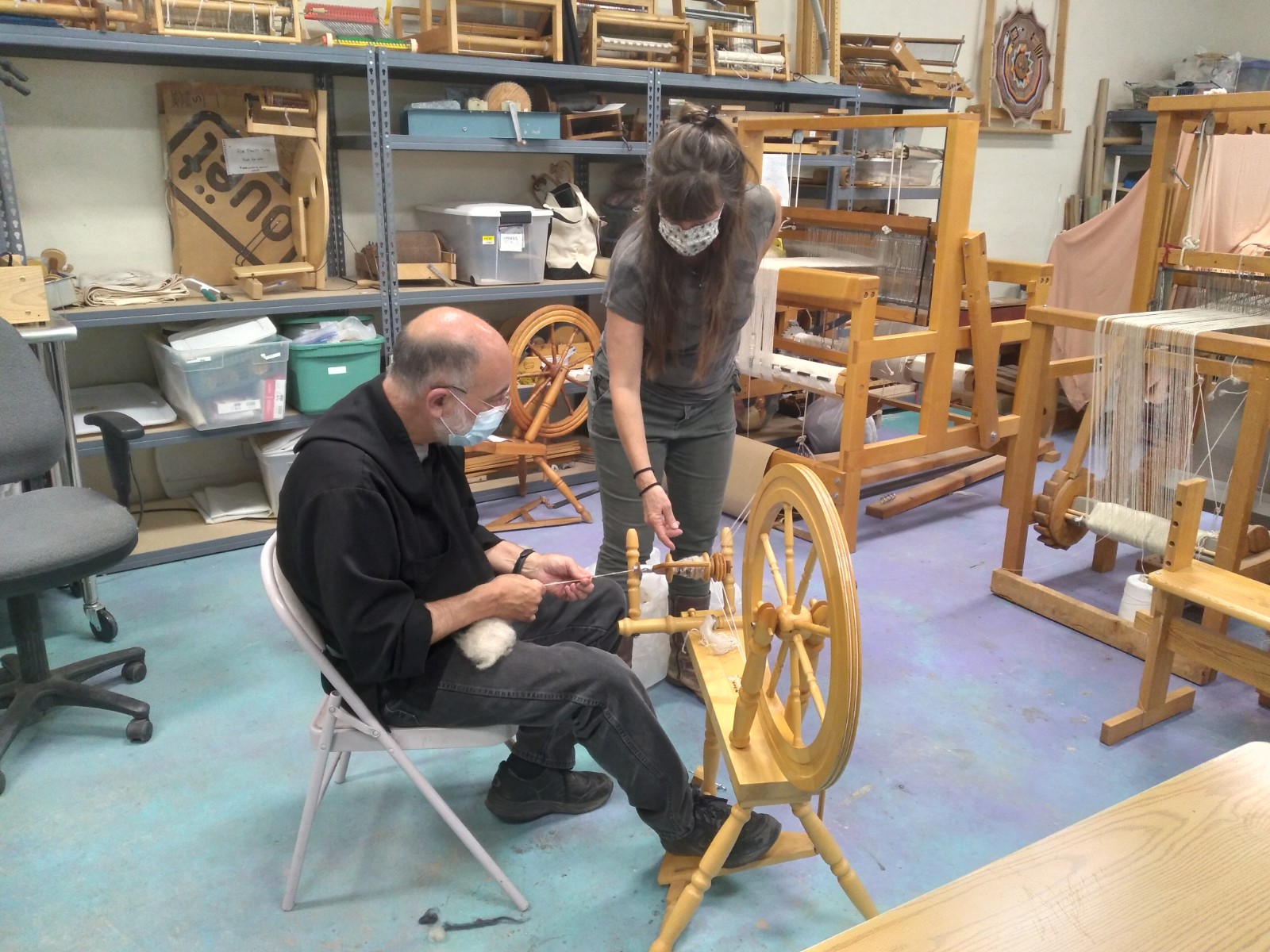
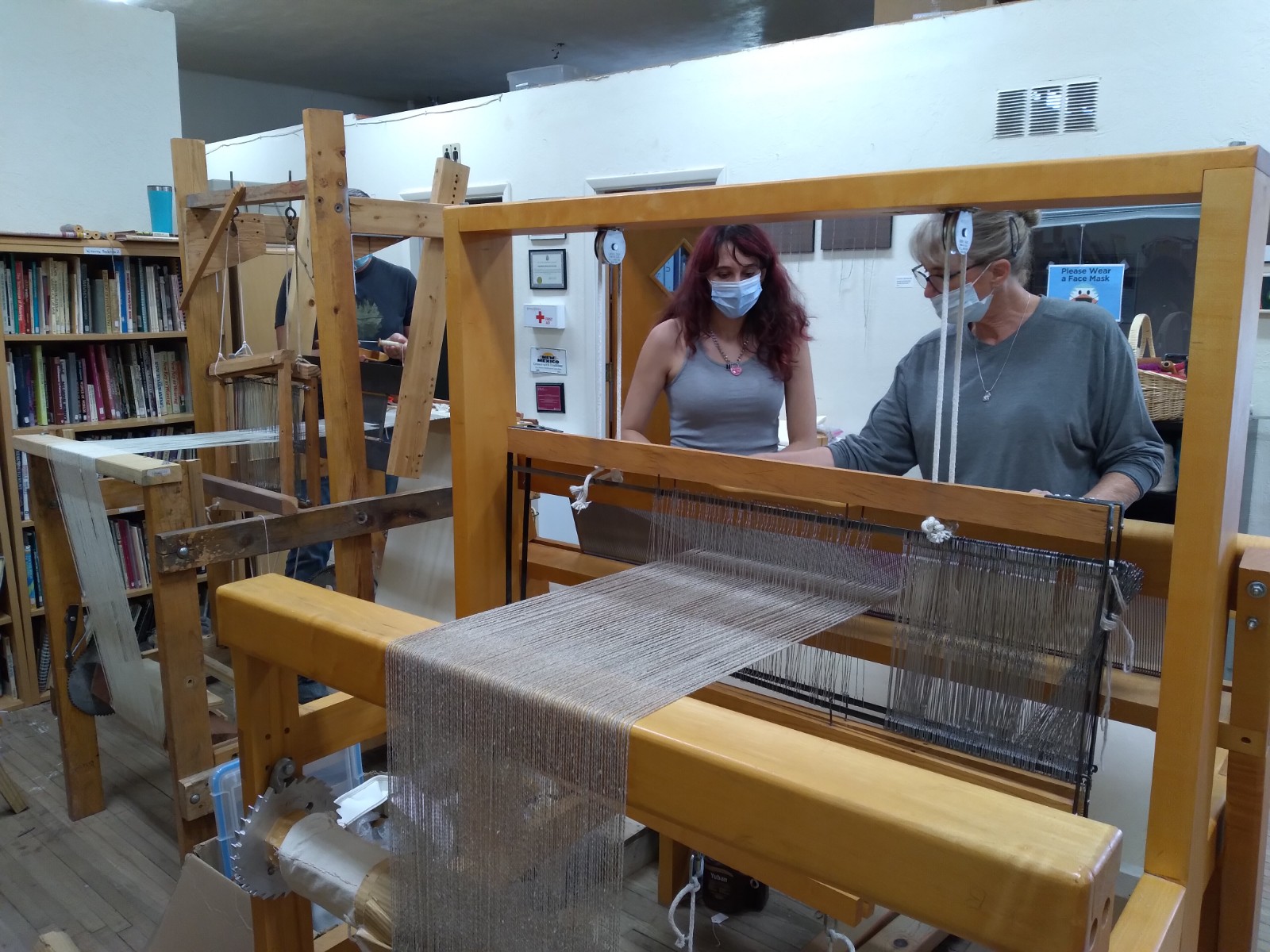
This year we start the 2023 Churro Week with the sheep shearing, churro processing demos, and a marketplace at the Los Luceros Historic Site, a working farm with the original territorial-style adobe buildings on the bank of the Rio Grande. They have been slowly working to introduce more Navajo/Churro genetics into their mixed breed herd.
EVFAC arranges for the shearing twice a year and then has the fleece milled at Mora Valley Spinning Mill into fluff for felting, roving for spinning, and yarn that is best for weaving, (although knitters do occasionally buy it.)
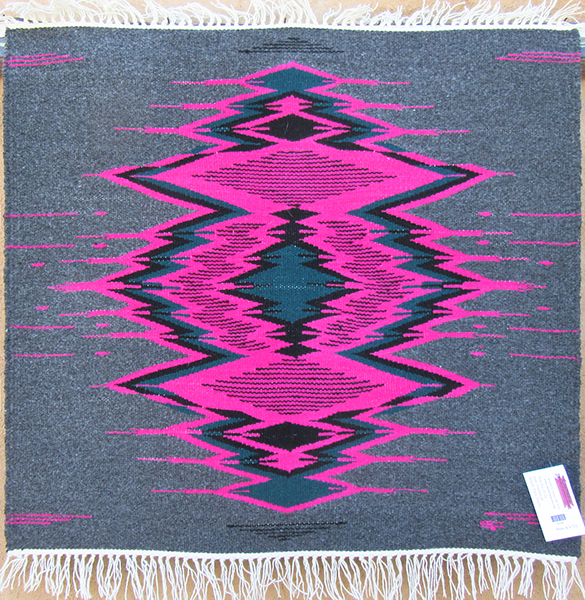
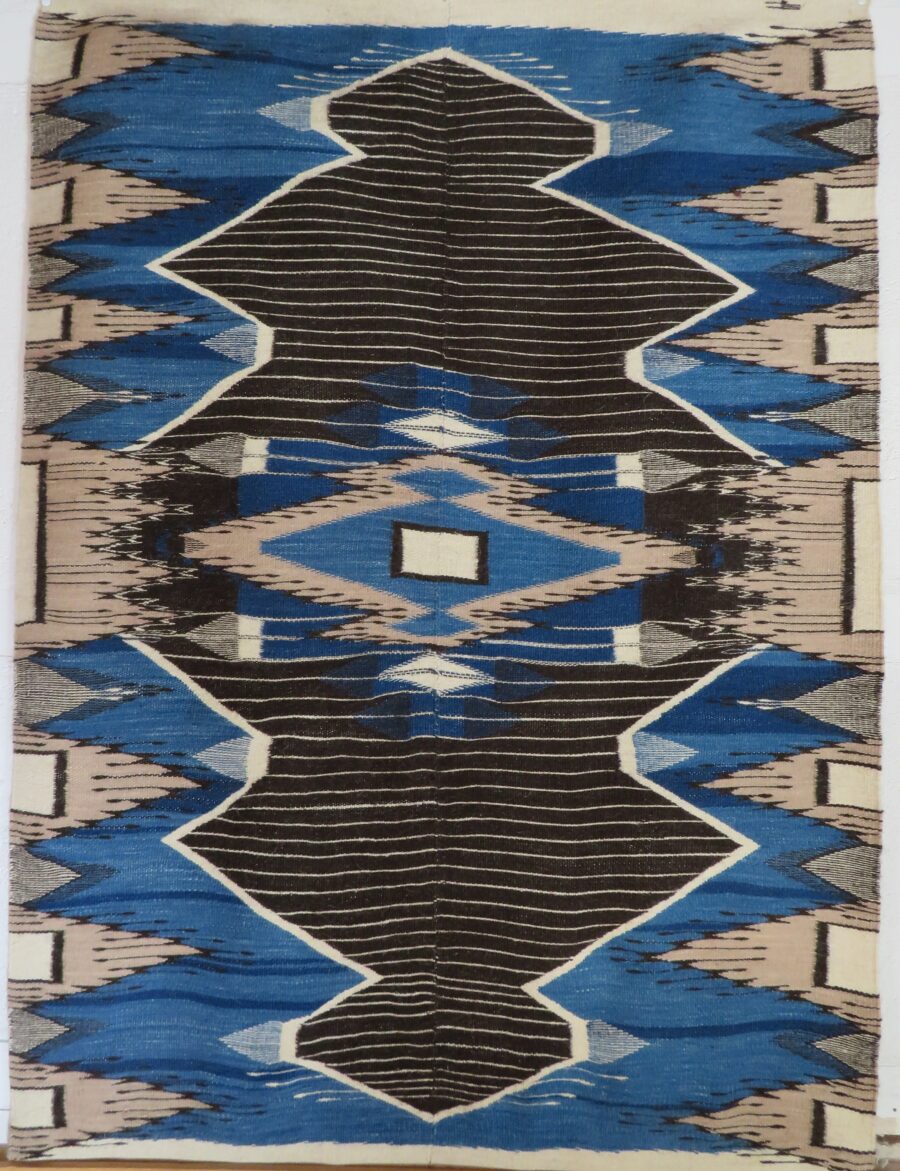
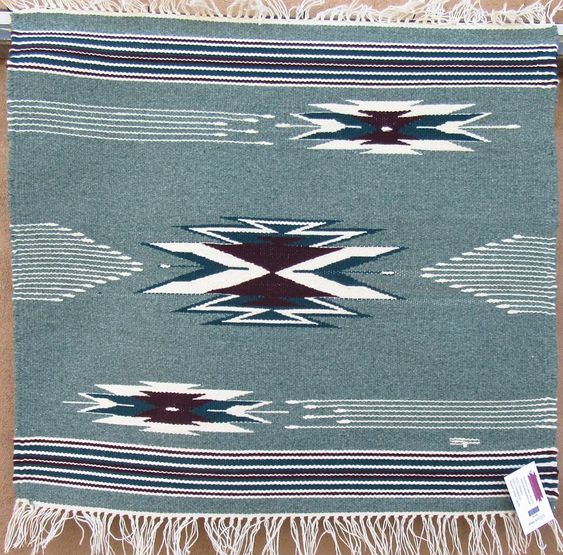
Navajo-Churro has a double coat, hair on the outside and finer wool on the inside, which makes it a particularly warm and durable wool, although scratchy (think army blankets). It’s a lustrous wool that softens and improves with age, as can be evidenced in our field trips to the Albuquerque Museum, which has the oldest New Mexican Rio Grande blankets, and to the Museum of Indian Arts and Culture on Museum Hill in Santa Fe, which houses an extensive collection of Navajo blankets.
Wednesday to Saturday
Wednesday evening Sandra Martinez will do a presentation about Martinez Studios’ production of tapestries, designed by her and dyed and woven by her husband from their sheep in Oaxaca. This will be followed by a reception and lamb buffet hosted by chef Arlo Martinez from Ohkay Owingeh,

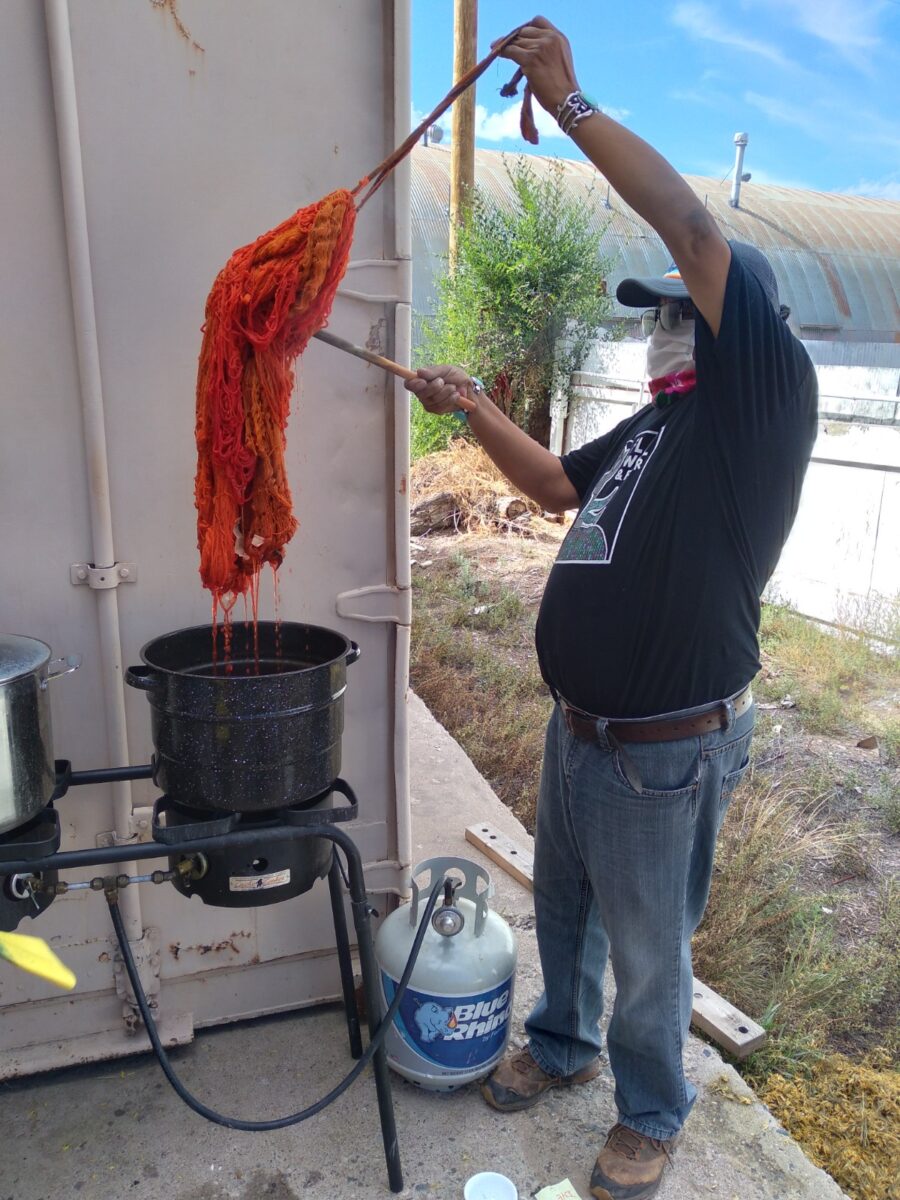
The week continues with three afternoons of washing, picking, carding, and spinning wool, after which it could be made into a churro bag on the wet felting machine or shaped into a wet felted (by hand) vessel with Stephanie Kamp-Carcan.
Or it could be woven into a Rio Grande piece with Emily Trujillo, 8th generation Chimayo weaver.
Or it could be dyed green (and related colors) with natural dyes in honor of St. Patrick with Dain Daller and Amanda Speer, who live and weave off the grid in northern New Mexico.
Or the naturally dyed yarn could be embroidered into a small piece of Colcha, the traditional Hispanic embroidery, with Annette Gutierrez, renowned Colcha artist.
There is a quick overview of our upcoming Churro Week, and we hope you will join us, this year or sometime in the future.
For information on Churro Week, to buy Churro supplies, or for more information about the Española Valley Fiber Arts Center, please go to https://www.nmfiberartscenter.org
We also recommend Rainbow Fibers https://rainbowfibercoop.org/, who travel the Navajo reservation every fall to buy Navajo-Churro fleece and have it spun at the Mora Mill.
Leigh Alexander serves on the Board of Directors of the New Mexico Fiber Arts Center (NMFAC/EVFAC), and is the Churro Week coordinator. A professional weaver with over 40 years of experience in the textile industry, Leigh developed and ran the Heritage Blanket program at EVFAC, training weavers on dobby looms and producing Churro blankets for wholesale.
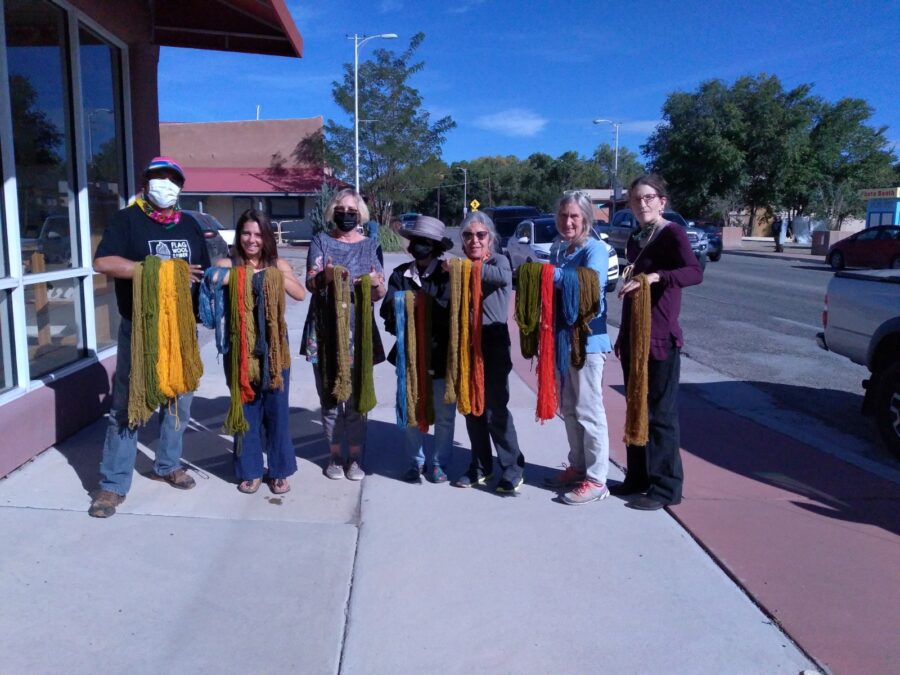

Semana Churro 2023: del 12 al 18 de marzo
Por Leigh Alexander
Churro Week surgió de una colaboración de pastores, con el propietario de un molino, con un productor navajo especializado en especies en peligro de extinción, con un agente de extensión, con consumidores finales, con un consultor de marketing y con varias otras partes interesadas. Ellos estaban interesados y preocupados en encontrar trabajo para las ovejas navajo-churro. Se inició una operación de tejido de mantas al por mayor y se desarrolló y construyó una máquina mecánica de fieltro húmedo (basada en el modelo afgano con manivela manual), todo alojado y facilitado por el “Española Valley Fiber Arts Center” (EVFAC). Mora Valley Spinning Mill, establecida específicamente para dar servicio a las ovejas Navajo-Churro, las cabras de angora y las alpacas de pelo largo del norte de Nuevo México, fue clave para procesar el vellón, lavar y recoger el fieltro e hilar para las mantas.
En 2014, EVFAC patrocinó la primera Churro Week con esquila de ovejas, con Diné be’ iiná (Navajo Lifeways) pasando la semana en Española enseñando a tejer estilo navajo, con demostraciones de procesamiento de churros y preparando una cena benéfica con cordero. A lo largo de los años, ha patrocinado talleres, paneles de discusión y viajes de campo, todos relacionados con la cría de ovejas, la producción de valor agregado y la comercialización de esta rara especie particularmente adecuada para el árido suroeste.
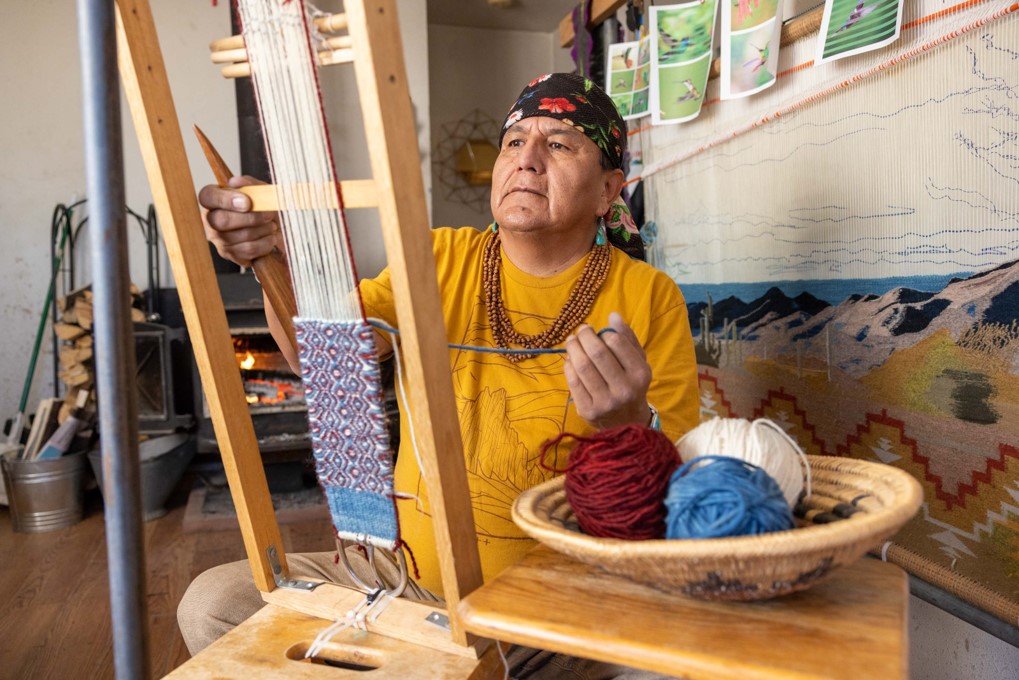


Este año comenzamos la Semana del Churro 2023 con la esquila de ovejas, con una demostración del proceso de los churros y con un mercado en el Los Luceros Historic Site , una finca en funcionamiento con edificios originales de adobe de estilo territorial en la orilla del Río Grande. Han estado trabajando lentamente para introducir más genética Navajo/Churro en su rebaño de razas mixtas. EVFAC organiza la esquila dos veces al año y luego hace que el vellón se muele en Mora Valley Spinning Mill en pelusa para fieltro, para mechar y para hilar en hilo que es mejor para tejer (aunque los tejedores de knitting también lo compran ocasionalmente). Navajo-Churro tiene un abrigo doble, pelo por fuera y lana más fina por dentro, lo que la convierte en una lana especialmente cálida y duradera, aunque áspera (piense en las mantas militares). Es una lana lustrosa que se suaviza y mejora con el tiempo, como se puede evidenciar en nuestras visitas de campo al Albuquerque Museum,, que tiene las mantas más antiguas de Nuevo México Río Grande, y al Museum of Indian Arts and Culture en Museum Hill en Santa Fe, que alberga una extensa colección de mantas Navajo.



Programa de Miércoles a Sábado
El miércoles por la noche Sandra Martínez hará una presentación sobre la producción de tapices de Martinez Studios’, diseñados por ella y teñidos y tejidos por su esposo con sus ovejas en Oaxaca. A esto le seguirá una recepción y un buffet de cordero organizado por el chef Arlo Martinez de Ohkay Owingeh.
La semana continúa con tres tardes de lavado, recolección, cardado e hilado de lana, después de lo cual se puede convertir en una bolsa de churro en la máquina de fieltro húmedo o en un recipiente de fieltro húmedo (a mano) con Stephanie Kamp-Carcan.
O podría ser tejido en una pieza de Rio Grande con Emily Trujillo, tejedora Chimayo de octava generación.
O podría teñirse de verde (y colores relacionados) con tintes naturales en honor a San Patricio con Dain Daller and Amanda Speer, quienes viven y tejen fuera de la red en el norte de Nuevo México.
También el hilo teñido naturalmente se puede bordar en una pequeña pieza de Colcha, el bordado tradicional hispano, con Annette Gutierrez, reconocida artista de Colcha.


Esta fue una descripción general rápida de nuestra próxima Semana del Churro, y esperamos que nos acompañe, este año o en el futuro.
Para obtener información sobre Churro Week, para comprar suministros de Churro o para obtener más información sobre el Centro de Artes de Fibra de Española Valley, Visite: https://www.nmfiberartscenter.org
También les recomendamos Rainbow Fibers https://rainbowfibercoop.org/,, que viajan a la reserva Navajo cada otoño para comprar vellón Navajo-Churro y hacer que lo hilen en Mora Mill.
Leigh Alexander es miembro de la Junta Directiva del Centro de Artes de Fibra de Nuevo México (NMFAC/EVFAC) y es la coordinadora de la Semana del Churro. Tejedora profesional con más de 40 años de experiencia en la industria textil, Leigh desarrolló y ejecutó el programa Heritage Blanket en EVFAC, capacitando a tejedores en telares dobby y produciendo mantas Churro para venta al por mayor.

